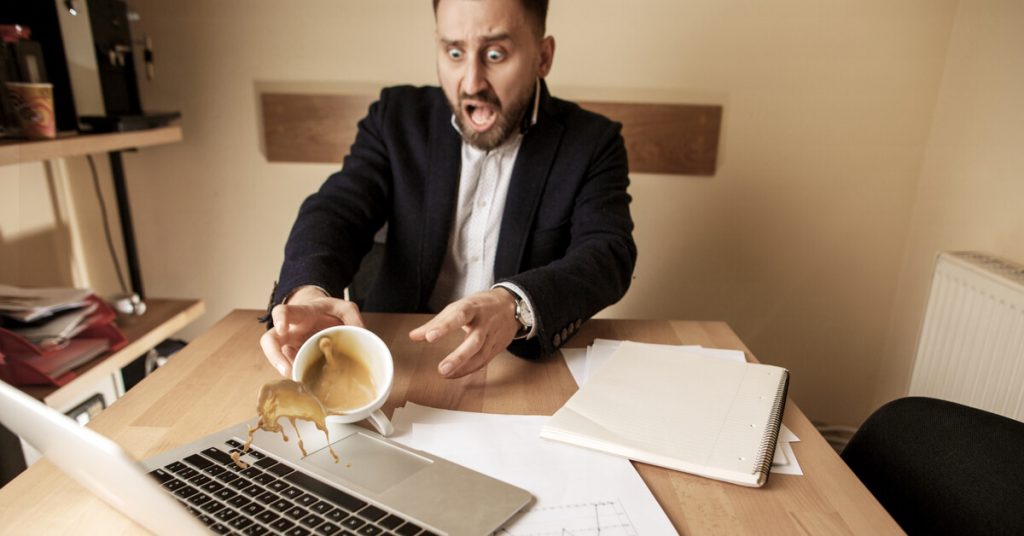Computer Won’t Turn On? Try These 5 Actions
November 12th, 2020“Well, what gives?!”
There are few things more annoying than staring at your own reflection in the monitor of a desktop or laptop computer that won’t boot up. In this piece, we’re going to provide a handful of steps you can try to get your computer to come to life once again.
1. Check Out the Power Source
If your computer seems completely devoid of life or movement (no lights, no fans spinning, etc.), the problem may be as simple (or complex) as the power. (No judgment—we’ve all been there!)
First, make sure that the power source is fully plugged into the computer, that the cord is fully plugged into an electrical outlet, and that the outlet is supplying electricity. You can test your outlet by unplugging another working device and plugging it into the necessary outlet.
If your computer is running through a power-strip-style extension cord or the preferred surge protector, check to see that any power switches are in the “on” or “power” position.
Dead Laptop Battery
Another reason your laptop won’t turn on is that the battery is completely drained. Even when not in use, batteries can lose some of their power over time—especially if your laptop has other accessories plugged into the ports that do not have their own power sources. At times, leaving the laptop on the charger for a time may supply the necessary charge for the computer to the point of allowing a boot-up. Other times, the battery may have outlived its usefulness and may need to be replaced.
2. Monitor Problems
Just because you can’t see anything on your computer screen doesn’t necessarily mean that the computer is kaput—your monitor just may need some attention. If you’ve attempted to boot up your computer, hear the familiar whirling, but are still staring into a blank screen, make sure that your computer monitor is:
- turned on
- is properly connected to a power source
- is properly connected to the computer
- Has the screen brightness turned up appropriately (it sounds silly, but it happens)
Most external monitors have their own power buttons on the front along with menu buttons to adjust settings. For laptop computers experiencing such issues, the screen may be disconnected internally or may have experienced other issues inside—possibly from impact, liquid damage, or from another source.
3. Accessory Devices
For as helpful as additional accessories can be, they can occasionally impact computer operation. To rule them out as the problem, attempt to turn on your computer after unplugging all accessories from the USB ports short of the mouse and keyboard. If the computer turns on properly after trying this, you can determine the culprit by repeating the process while plugging in one USB accessory at a time until the problem returns.
4. Software/Driver Issues
Certain malfunctioning drives or other components may be the reason your computer isn’t booting up properly. Fortunately, you can start your computer in “Safe Mode” to get the bottom of the issue.
How to Start Safe Mode On Windows 7 or Older:
- Attempt to start your computer normally. When you detect that it’s starting up (regardless of the monitor activity) hold down the F8 key.
- If a menu pops up, you can release the F8 key and navigate through Safe Mode.
How to Start Safe Mode On a Mac / Apple Computer:
- Shortly after booting up your computer, hold down the Shift key.
- Release the Shift key once the Apple logo appears.
From Safe Mode with your Windows OS, you should be able to run a System Restore which will roll back the operation of your computer to a date in the past when it functioned properly.
5. Take Your Device to a Computer Repair Professional
“But the reason I’m reading this is to keep from having to visit a computer repair technician!”
We know, we know. However, if you’ve exhausted all do-it-yourself options, you’re really left with no other choice. The good news is that the remedy may be an extremely quick and inexpensive fix that an experienced computer repair professional can address—possibly even over the phone! Keep your chin up.












